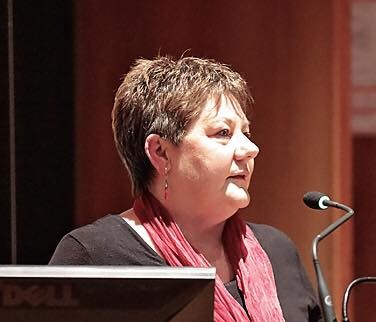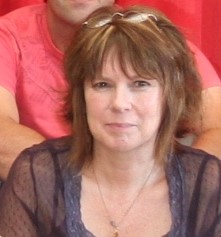2019 is the International Year of Indigenous Language
.
Theresa Sainty and Annie Reynolds
present
palawa kani – The revival of Tasmanian Aboriginal language
Tuesday, 4 June 2019
8.00pm in the Royal Society Room,
Customs House Building, entrance from Dunn Place, Hobart
.From the flourishing possibly sixteen original languages spoken in lutruwita (Tasmania), to near extinguishment under post-invasion colonial pressures and sleeping for almost two hundred years, palawa kanihas emerged as the language of Tasmanian Aborigines. It is now fundamental to Aboriginal community activities and family life, with two generations of children having learnt it from infancy. palawa kaniis shared with the public through renaming of places, and things as varied as a newly discovered squat lobster and the next Antarctic icebreaker. How did this happen? Where does the knowledge of the language come from? And can it ever be a ‘living’ language, one that is used in daily life?
 Theresa Sainty is a Pakana woman and has been Aboriginal Linguistic Consultant for the Tasmanian Aboriginal Centre’s palawa kaniLanguage Program since 1997. Theresa has also worked with the Tasmanian Department of Education, Aboriginal Education Services, developing Aboriginal Cultural Awareness training and a number of curriculum resources about Tasmanian Aborigines. Theresa is current Chair of TMAG’s Tasmanian Aboriginal Advisory Council, and has begun a Senior Indigenous Research Scholarship at UTAS.
Theresa Sainty is a Pakana woman and has been Aboriginal Linguistic Consultant for the Tasmanian Aboriginal Centre’s palawa kaniLanguage Program since 1997. Theresa has also worked with the Tasmanian Department of Education, Aboriginal Education Services, developing Aboriginal Cultural Awareness training and a number of curriculum resources about Tasmanian Aborigines. Theresa is current Chair of TMAG’s Tasmanian Aboriginal Advisory Council, and has begun a Senior Indigenous Research Scholarship at UTAS.
 Annie Reynolds has evolved from graduate studies of Old Norse, Old English and Old Irish in Sydney and Adelaide to coordinating the work of the Tasmanian Aboriginal Centre’s palawa kaniLanguage program statewide since the mid 1990s. Within the TAC she also conducts historical research and writes and edits a variety of material, mostly for the Aboriginal community.
Annie Reynolds has evolved from graduate studies of Old Norse, Old English and Old Irish in Sydney and Adelaide to coordinating the work of the Tasmanian Aboriginal Centre’s palawa kaniLanguage program statewide since the mid 1990s. Within the TAC she also conducts historical research and writes and edits a variety of material, mostly for the Aboriginal community.
